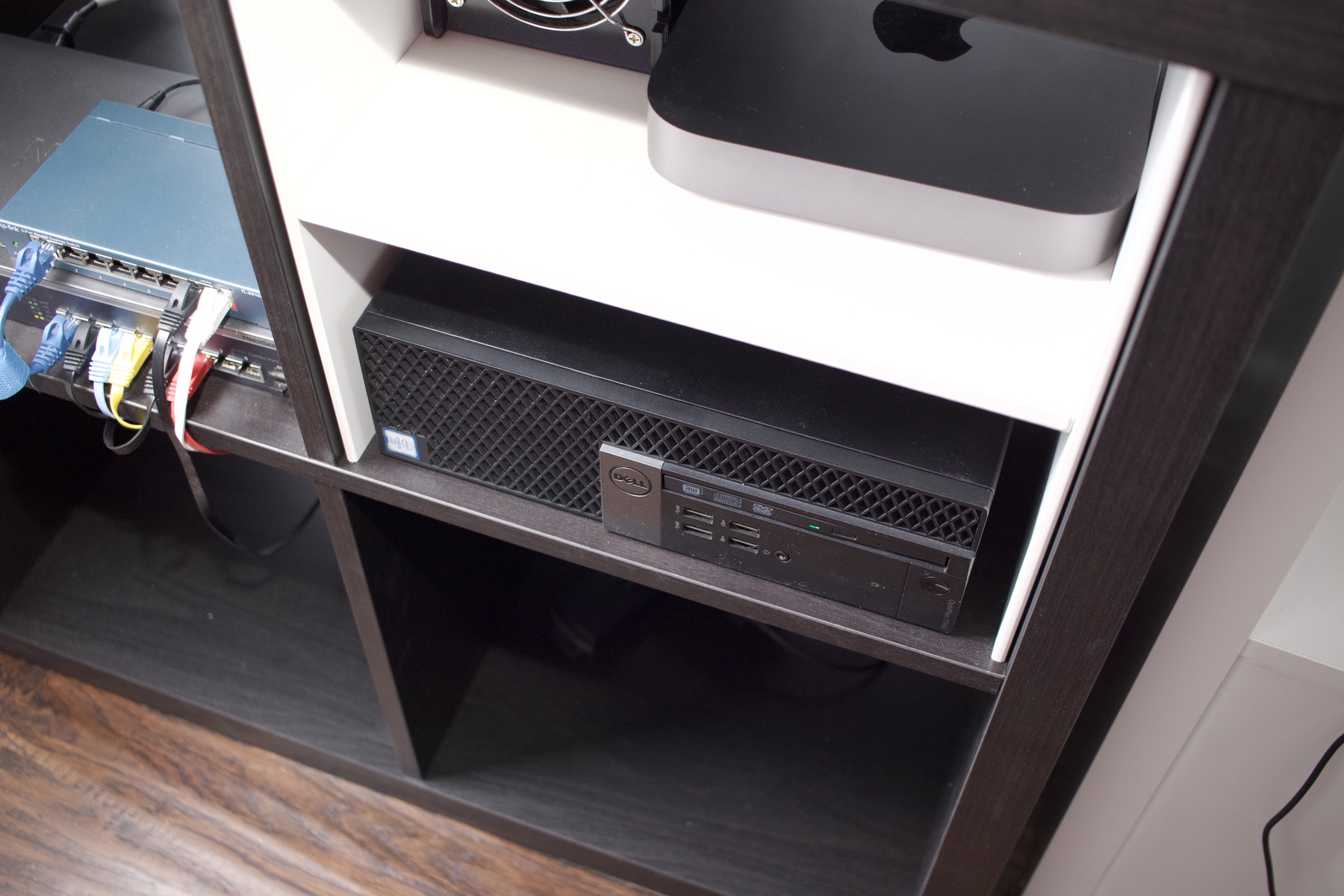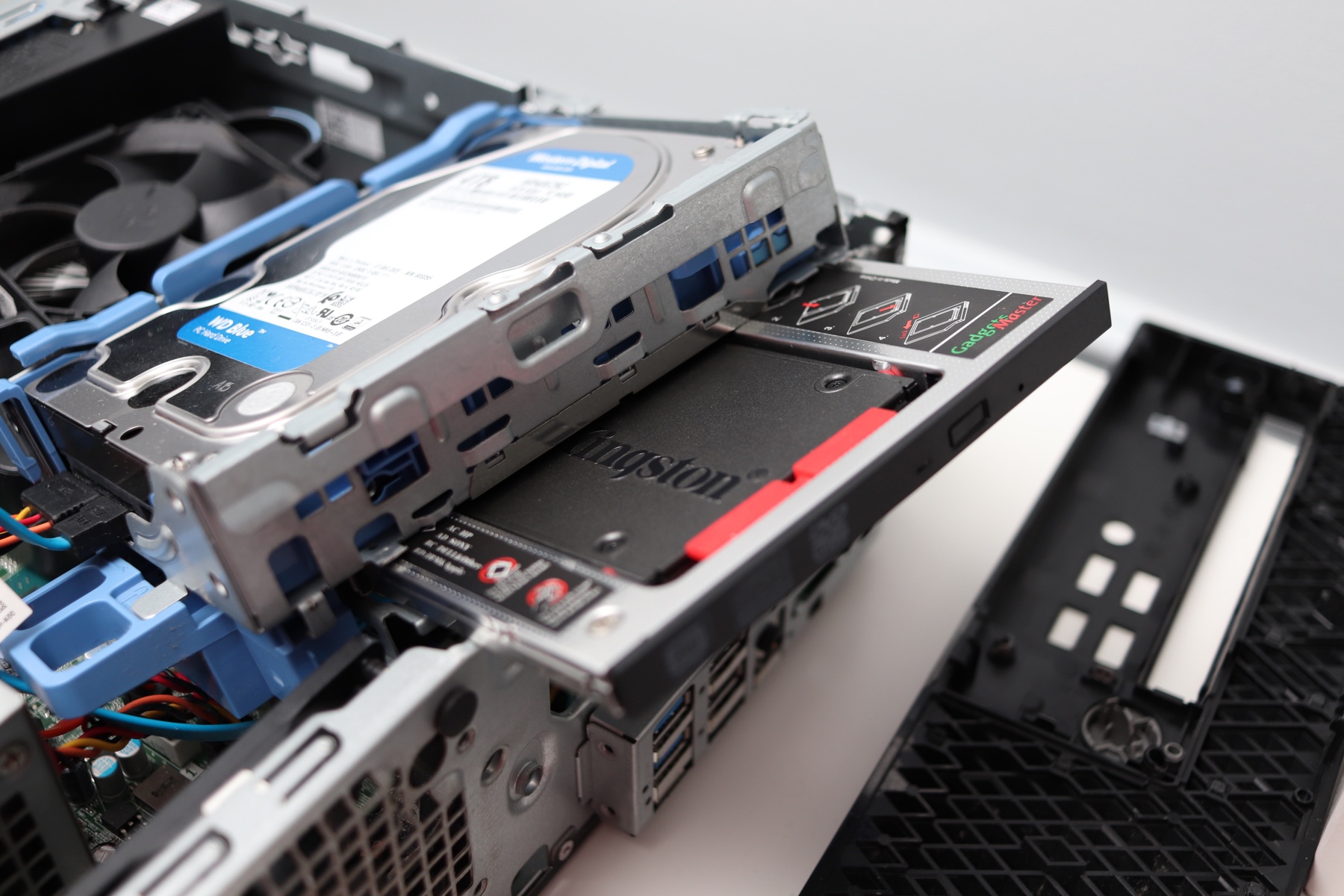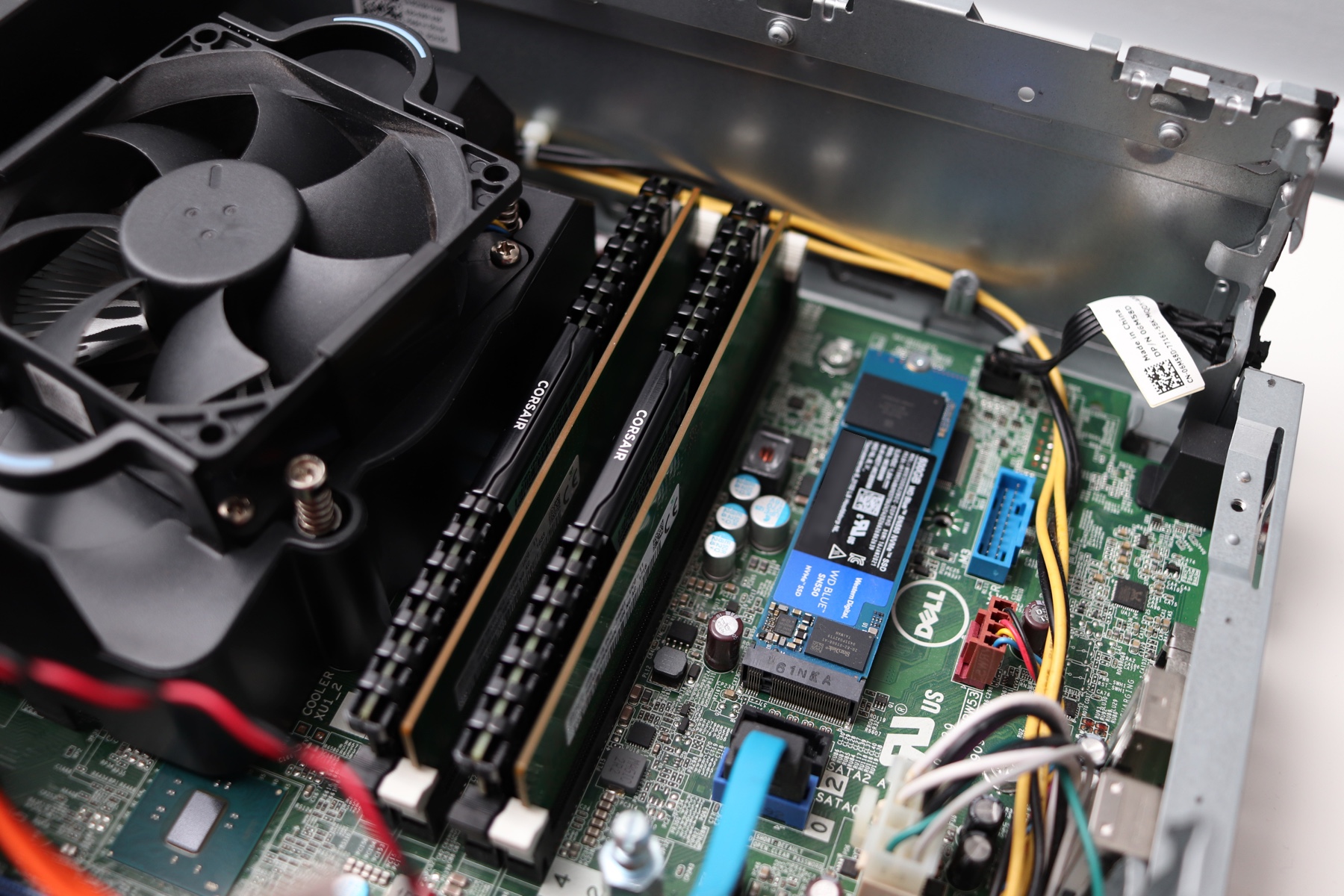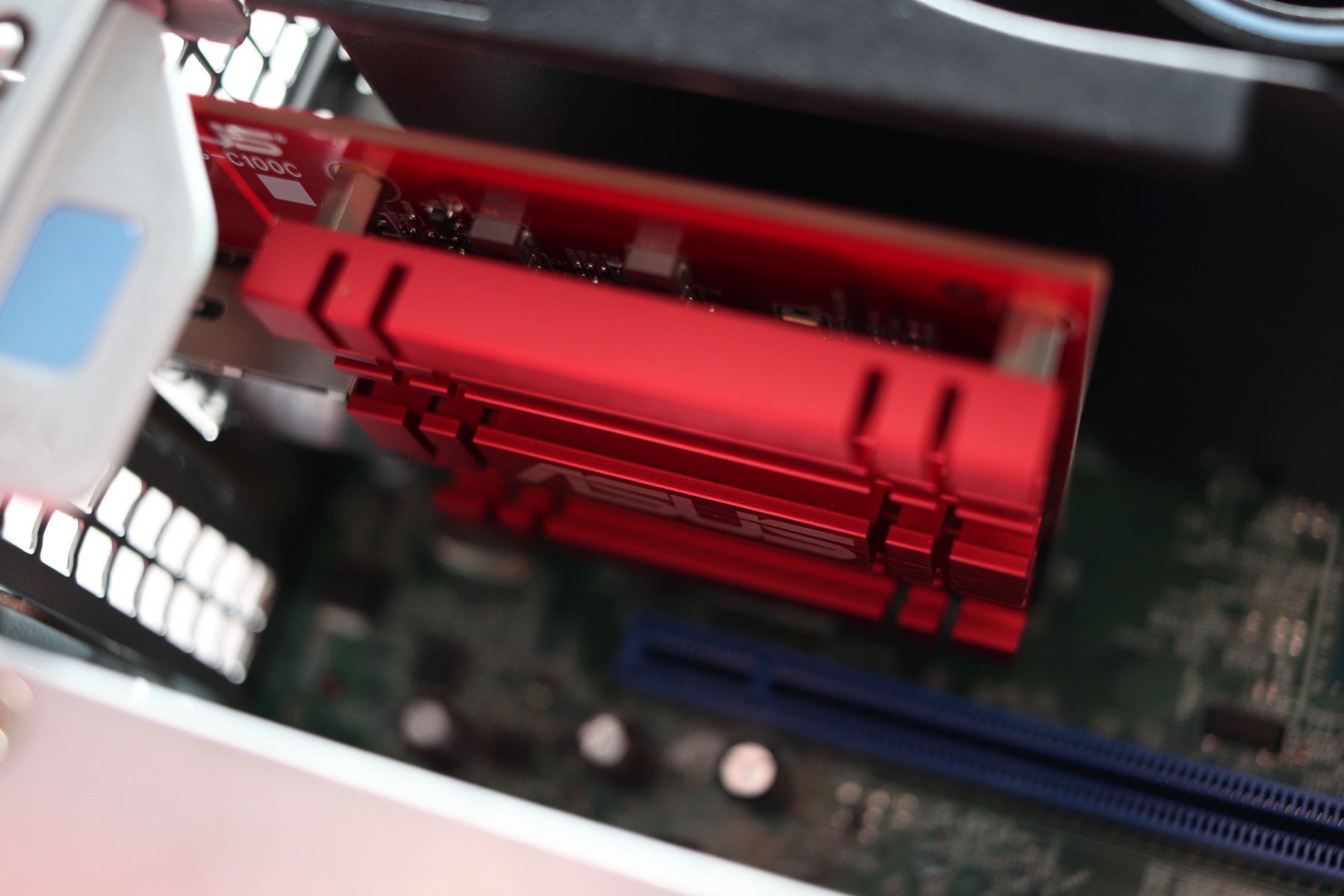Improving the Homelab
It was a slippery slope, going from “the cheapest quicker-than-1GbE PC” to having multiple pieces of equipment.

Making a server out of an office PC
I wanted to keep the H2+ mainly as a storage server, and needed a device to run Proxmox for virtual machines and containers.
The requirements I had were simple:
- Option for at least 3 storage devices
- One NVMe SSD to run VMs and use as a cache
- One SATA SSD to run the hypervisor on
- One HDD as a larger but cheaper storage device
- At least 1 PCIe slot for a 10Gbps Ethernet card
The pre-purchase
A refurbished Dell Optiplex 7040 SFF fit the bill perfectly:
- A 4c/4t Intel 6th Gen i5 CPU
- 8GB of RAM in 2⨉4GB configuration, with a capacity up to 64GB in 4⨉16GB configuration
- 1⨉3.5" drive slot, that can take 2⨉2.5" drives
- One PCIe⨉16, one PCIe⨉4 connector
- One M.2 NVMe slot
It fit in a KALLAX section just right, and it had all the space for everything I wanted, and nothing more.
The build-up
I ended up adding:
- A WD Blue WD40EZRZ 4TB 3.5" HDD, of the CMR kind
- A WD Blue SN550 500GB NVMe SSD
- An SSD caddy for optical drives, and a 256GB Kingston drive I had around
- Some cheap 16GB Corsair RAM that actually ended up costing me more.
- An Asus XG-C100C 10GbE Network Adapter



The one-and-only hickup—The Bootup Problem
While the setup works beautifully now, it didn’t want to boot up at first. After a bit of debugging, plugging components one by one and trying to find the culprit (and also remembering why I stopped building PCs in the first place!), I traced it back to the Corsair RAM I’d purchased from Canada Computers.
One of the sticks, when plugged in, would prevent the PC from POSTing.
Took it back to CC, who refused to exchange it and was like “you’re on your own, good luck!”, so I reached out to Corsair which immediately RMA’d the sticks.
Only problem? You have to pay for the shipment to the US. I paid about 1/5th of the amount I paid for the RAM itself, and it still ended up being the cheapest 2⨉8GB RAM I could’ve bought, but I’m gonna think twice before buying Corsair in Canada and I’m never buying anything from Canada Computers ever again.
Getting an overkill switch: Netgear XS508M
Eight RJ45 ports, one of which is shared with an SFP+ port, all supporting up to 10GbE speeds. It’s like any other switch, but it’s way bigger, and because it’s got a fan, it’s also much louder. Which is annoying, but easy to tune out.
At the end of the day, it’s just a simple switch though. I cannot wait for these to become cheaper and fanless.
Just like the Dell Optiplex, it fits inside the shelves of a KALLAX just right, with just enough space to keep the air from the fan flowing.
The current complete setup
I’m really happy with my current computing setup, including the network stack and my new everyday computer.
Optiplex 7040
Runs a few VMs; some for development, some for leisure and entertainment. Also runs as an intermediary storage server for double-backups.
Mac mini
After I got my M1 MacBook Air, I went back and forth on selling the Mac mini, but it’s got all the specs I want from a mini server, and I have it now, so why bother?
6-core 12-thread i7 CPU, 10Gb Ethernet, 32GB RAM with option to expand up to 64GB, 1TB fast storage, and Thunderbolt 3 for further expansion, feels like more than enough for a homelab PC.
The Network
The Netgear 10GbE switch aside, I’ve got a bunch of TPLink switches all over the place, and a MoCA adapter to get a wired connection from the downstairs modem to the upstairs office.
The Gigabit switches are used for devices that don’t have a network card that can use multi-gigabit connections—the printer, Raspberry Pi’s, smart home hubs, etc.
The Netgear drives the H2+ with the 2⨉2.5GbE ports, the 10GbE on the Mac mini, the 10GbE ASUS card inside the Dell Optiplex, and an inexpensive 2.5GbE USB adapter attached to the MacBook Air. Along with the upstream connection to the Gigabit switch for internet connectivity, I’m already using 6 ports out of the 8 available.
The potential upgrade
I’m actually thinking of creating a pfSense router out of a PC, and running a managed PoE hub to drive said PC and a wireless access point.
But that’s a project for 2022, IMHO.